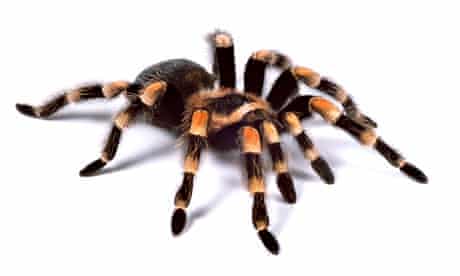Spiders Steering Clear of Spider-Predators
 |
"Jumping spiders are absolutely amazing because they have this incredible eyesight. And they can see almost as good as we do, so they pay attention to detail.""There’s a lot of assessment of the risk in this moment, so they assess how big is that thing? How quick could it get to me?""And then also knowing that motion really triggers what jumping spiders perceive, like, moving away in this choppy fashion and really slowly maybe is also a strategy of not getting the attention from the predator."Daniella Roessler, study lead researcher
 |
When confronted with a spider-like 3-D model, jumping spiders freeze and back away slowly, especially if the model has eyes. Daniela Roessler |
The jumping spider was placed under observation to determine whether its reaction would be based on its ability to detect which of the objects might cause a survival response, despite that the objects were stationery. The spiders' reactions were videoed, the first of which shows a baby spider seemingly assessing the black 3D spheroid model. Without hesitation, the spider scuttles over to the object, leaping it on the platform and clambering over the model, an obvious indication that fear of repercussions was not involved.
This changed when the baby spider was confronted by a 3D printed black spider, but this one fitted with frontal eye features, the presence of which caused the baby spider to freeze, move cautiously to the side and finally turn decisively away, leaping off in the opposite direction. Again, the same sphere, lacking frontal eye features provoked a more confident reaction in the baby spider, where it moved forward as though assessing the large object before it. Within seconds it turned in the opposite direction away from the object.
When presented with multiple species of dead jumping spiders, the researchers made note of the baby spiders becoming more fearful of the species that appeared just as it did; the brown marpissa muscosa. It refused to approach any nearer the dead specimen; freezing, then slowly backing away...
 |
| Tarantula ... Photograph: Redmond Durrell/Alamy |
Labels: Arachnophobia, Nature, Research, Science, Spider Survival Instinct

0 Comments:
Post a Comment
<< Home